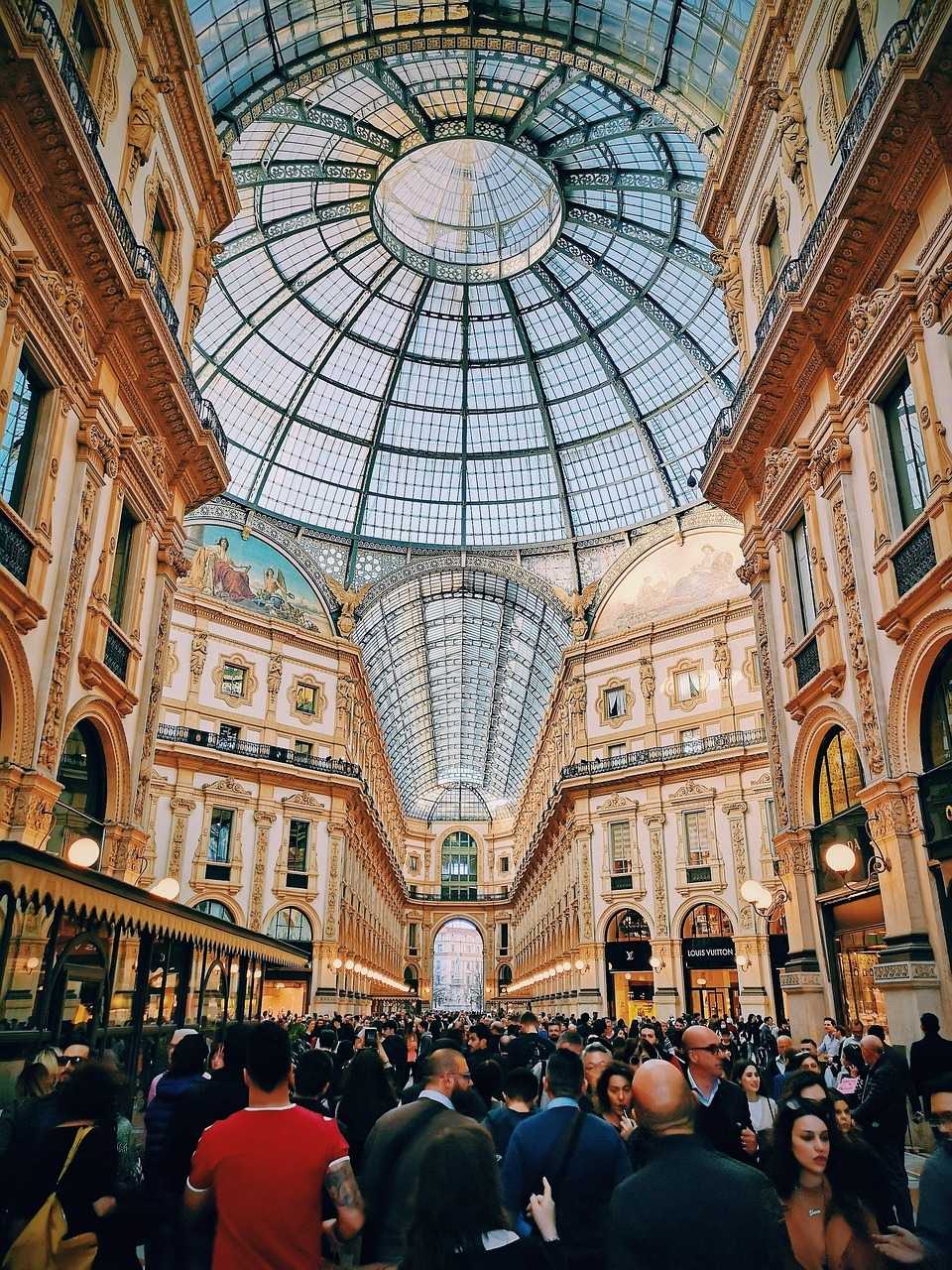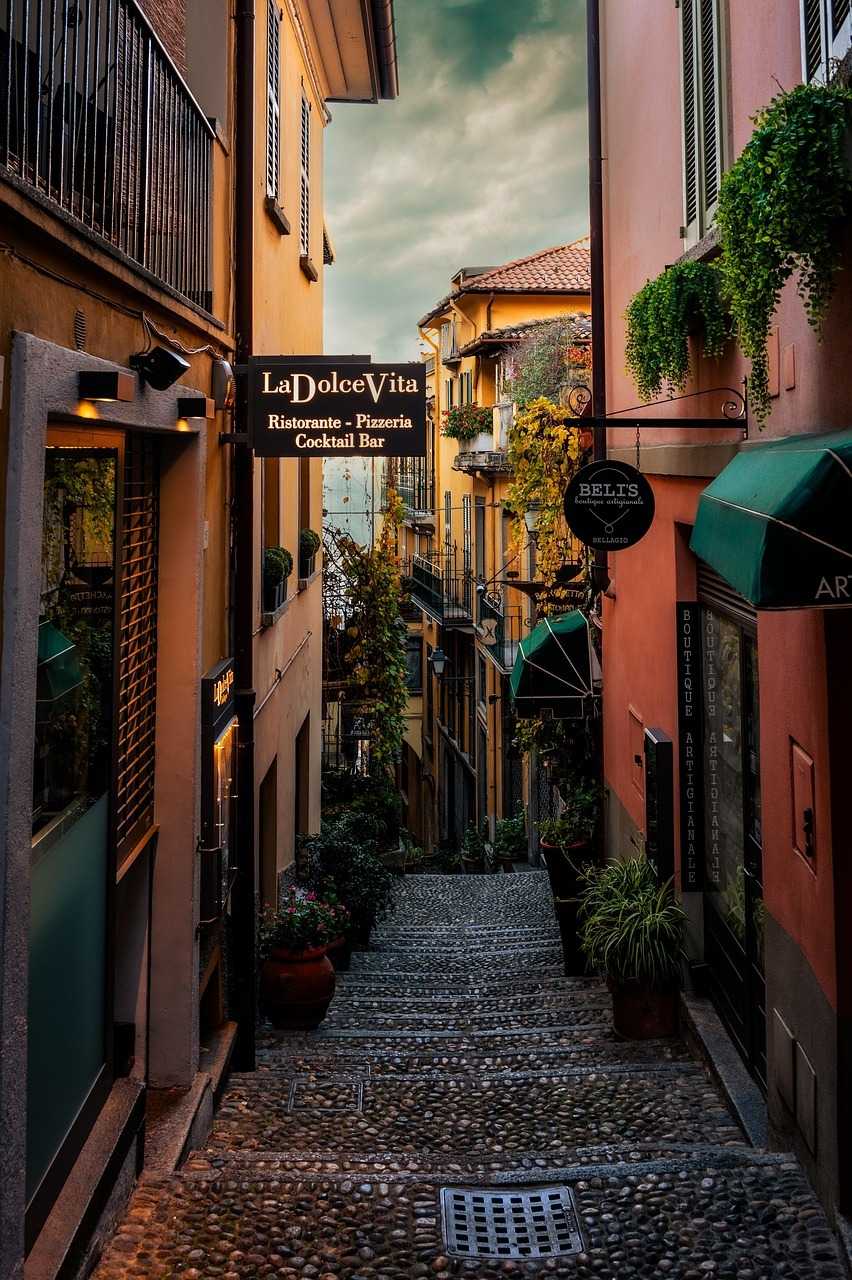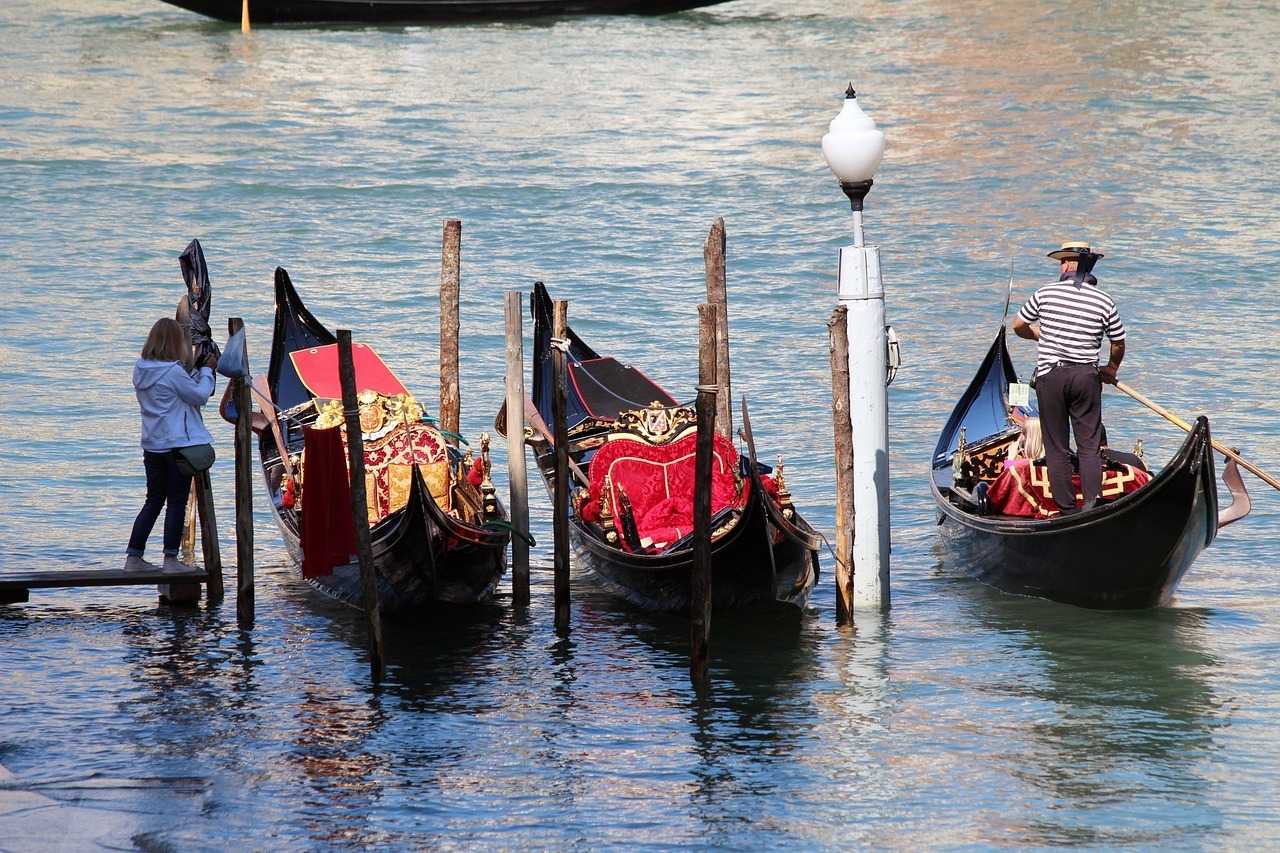Daily life in Italy comes with a mix of practical considerations that can vary depending on where you live. This section covers everything from understanding local customs and etiquette to the cost of living, along with other useful information to help manage day-to-day life.
Advertisement
Brandon Le Clerk
What I really love about InterNations? Making new business contacts and friends in real life. This is a unique plattform.
Li Wang
At my first InterNations Rome Get-Together I met more expats then expected. InterNations made is so easy to settle in.
Jump right in:
Advertisement
Why you'll love InterNations in Italy
and countless possibilities for fun and friendship!
Advertisement
Advertisement
Practical information
-
Official country name: Italian Republic (Repubblica Italiana)
-
Government type: Unitary parliamentary republic
-
Capital: Rome (Roma)
-
Currency: Euro (EUR, €)
-
Official language: Italian
-
Main religion: Roman Catholicism, which makes up around 70% of the population
-
Time zones: UTC+1 (CET) and UTC+2 (CEST)
-
Emergency numbers:
- 112 — General EU emergency line
- 113 — Police
- 115 — Fire department
-
Country code: +39
-
Plug/socket type: Type C, F and L (230V, 50Hz)
What are the main international airports in Italy?
Italy has 37 airports across the country. Some of the major international ones include:
- Rome Fiumicino (FCO)
- Milan Malpensa (MXP)
- Venice Marco Polo (VCE)
- Turin Airport (TRN)
- Naples Capodichino International Airport (NAP)
- Catania Fontanarossa (CTA)
Where to buy groceries in Italy?
There are common supermarkets across the country such as:
- Coop
- Conad
- Esselunga
- Famila
- Carrefour
- Lidl
For fresh produce, many locals prefer shopping at open-air markets, which are usually held weekly in towns and neighborhoods. Convenience stores and small corner shops (alimentari) can be ideal for quick stops.
How does the postal service in Italy work?
If you need to send or receive mail in Italy, you’ll mostly use Poste Italiane, the national postal service. Post offices are easy to find in towns and cities, and you can send letters, parcels, or pick up mail. For faster or international deliveries, private couriers like DHL, UPS, or FedEx are also widely used.

Public holidays in Italy
These are the public holidays in Italy:
- New Year’s Day (Capodanno): 1 January
- Epiphany (Epifania): 6 January
- Easter (Pasqua): between 22 March and 25 April
- Easter Monday (Pasquetta): Monday after Easter
- Liberation Day (Festa della Liberazione): 25 April
- International Workers’ Day (Festa del Lavoro): 1 May
- Republic Day (Festa della Repubblica): 2 June
- Assumption Day (Ferragosto or Assunzione): 15 August
- All Saints’ Day (Tutti i santi): 1 November
- Immaculate Conception (Immacolata Concezione): 8 December
- Christmas Day (Natale): 25 December
- Saint Stephen’s Day (Santo Stefano): 26 December
Main embassies in Italy
Rome is home to 140 embassies from around the world. After that, you can find the largest number of consulates in Milan, but there also consulates located in other cities across the country, such as Bari, Bologna, Florence, Genoa, Naples, Palermo, etc.
Cost of living
Is it expensive to live in Italy?
Living in Italy can be relatively affordable, but costs vary by location. Urban centers such as Rome, Milan, and Florence tend to have higher rents and living expenses. In contrast, smaller towns and southern regions often offer lower costs for housing and daily needs. Essentials like food, transport, and healthcare are typically reasonably priced compared to other Western European countries.
Average cost of living
The average cost of living in Italy depends on the city, your lifestyle, and whether you’re living alone or with others. In northern cities like Milan, Bologna, or Turin, the cost of living is generally higher. A single person might spend around 800 EUR (approx. 930 USD) to 1,000 EUR (approx. 1,160 USD) per month, excluding rent. Southern areas such as Naples, Bari, or smaller towns in Calabria or Sicily, tend to be more affordable, with average monthly expenses about 800 EUR (approx. 930 USD).
One of the biggest differences is groceries and dining out. Food prices are slightly higher in the north, especially for imported goods or when eating in restaurants. In contrast, southern regions often offer lower prices on fresh produce, local products, and market shopping. On average, a weekly grocery bill might range from 50 EUR (approx. 60 USD) to 80 EUR (approx. 95 USD), depending on location and eating habits. Shopping at open-air markets and cooking at home can help keep food costs down across the country.
Rent prices by city
The average rent price in Italy is 800 EUR (approx. 900 USD) a month. However, this is just the average — you’ll find rental prices ranging from 490 to 1,550 EUR (approx. 550 to 1,700 USD). Below is a table showing sample monthly rental prices per square meter by region, from most expensive to least expensive.
You can read more about housing and rentals in our Housing in Italy guide.
| Region | EUR | USD (approx.) |
Lombardia | 18.35 | 21.50 |
Valle d'Aosta | 18.17 | 21 |
Lazio | 14.29 | 17 |
Tuscany | 15.18 | 18 |
Basilacata | 7.43 | 9 |
Molise | 7.09 | 8.25 |
Calabria | 6.7 | 7.75 |

Utility costs
As for the cost of utilities, you would typically pay between 120 to 300 EUR (approx. 140 to 350 USD) for electricity, gas, and water, depending on the size of your house or apartment. Internet would cost around 20 or 30 EUR (approx. 25 to 35 USD) monthly.
Travel and transport costs
Daily trips on public transport usually cost around 1.50 EUR (approx. 1.60 USD), while a monthly pass costs around 35 to 50 EUR (approx. 40 to 60 USD). If you plan on driving in the country, you should know gas prices are currently around 1.72 EUR (approx. 2 USD) a liter. You can read more about public transport in Italy in the section below.
Healthcare costs
Italy offers a universal public healthcare system (Servizio Sanitario Nazionale — SSN), which provides essential medical services to residents at little to no cost. Visits to a public general practitioner or specialist typically involve small co-pays. Emergency care is generally free for urgent cases.
A private doctor’s visit usually costs between 20 EUR and 150 EUR, while specialist consultations are usually higher. Diagnostic tests like MRIs or X-rays can cost several hundred euros privately. Over-the-counter medications generally cost a few euros.
You can find more information about the healthcare system in our Healthcare in Italy guide.
Education costs
Private school tuition in Italy generally ranges from around 7,000 EUR to 19,000 EUR (approx. 8,000–22,000 USD) per year, depending on the school and grade level. Full-day daycare or preschool costs generally fall in the 300–600 EUR (approx. 350–700 USD) per month range but can be much lower or higher depending on location and whether it’s a public or private facility.
You can find more information about the education system and fees in our Education in Italy guide.
Grocery and food prices in Italy
Below are some common items you would typically buy for groceries.
| Item | EUR | USD (approx.) |
Apples, 1kg | 2 | 2.20 |
Chicken breasts, 1 kg | 10.60 | 11.30 |
Eggs, 12 | 3.40 | 3.70 |
Local cheese, 1 kg | 13.15 | 14.10 |
Bottle of wine, mid-range | 6 | 6.50 |
Domestic beer, 0.5 l | 1.50 | 1.60 |
Cigarettes 20 Pack | 6 | 6.50 |
Entertainment and other expenses
| Activities | EUR | USD (approx.) |
Gym membership | 30–50 | 35–60 |
Tennis court rent | 11–30 | 12–35 |
Cinema ticket | 9–12 | 10–15 |
Cultural events (e.g., opera or theater) | 30–150 | 35–175 |
Club entrance | 10–30 | 11–35 |
Personal care (e.g., haircut or massage) | 30–100 | 35–115 |
Driving in Italy
Depending on where you’re coming from, driving in Italy might take some getting used to. How easy it is to drive there will also depend on where exactly you’ll be commuting or traveling.
Several highways (Autostrade) can be found throughout the country, which are comfortable to navigate. However, you’ll find streets in historic centers to be narrow and winding. These are easily congested, which is why motorcycles are such a popular means of transport.
If you rely on GPS, stay alert and double-check your route. This is because you run the risk of finding two or more towns with the same name, or one-way streets wrongly signaled on GPS.
How to get a driver’s license in Italy
The legal age for driving in Italy is 18, even if you’ve been granted a license in another country before that. Whenever driving, you are required to have on you:
- your original driver’s license
- international driver’s permit (in some cases)
- liability insurance
- vehicle registration documents
- your ID or passport
If you have an EU license
If you hold a valid EU or EEA driving licence, you can use it in Italy without exchanging it, as long as it hasn’t expired and hasn’t been suspended or revoked. If you have a driving license without an expiry date, you’re required to exchange your license after 2 years of residence in Italy.
If you have a non-EU license
If you’re a non-EU/EEA license holder, you can legally drive in Italy for up to one year after establishing residency, but only if your valid foreign license is accompanied by either an International Driving Permit (IDP) or a certified Italian translation. Once that one-year period ends, driving on your original license is no longer permitted.
At that point, if your home country has a reciprocal agreement with Italy, you can convert your license without taking a test. Otherwise, you’ll need to go through the full process of obtaining an Italian license including passing theoretical and practical exams.
To exchange your driving license, you must go to an office of the Ministry of Transport in your province or Ufficio della Motorizzazione Civile. You’ll need to bring the following documents:
- your original driving license and a copy
- completed application form (TT2112)
- valid ID document and Codice Fiscale (Tax ID), and their copies
- two passport-sized photos
- a medical certificate is required only if your license is expired or has no expiry date. It must be issued within 3 months by a licensed physician, or within 6 months if issued by a medical board.
- receipt of two payments via PagoPA: 32 EUR (approx. 37 USD) (stamp duty — account 4028), 10.20 EUR (approx. 12 USD) (administrative fee — account 9001)
Driving rules in Italy
Here are some basic rules about driving in Italy:
- You drive on the right side.
- Dipped headlights must be used on two-way motorways and outside of built-up areas.
- The use of seatbelts is compulsory, and car seats are mandatory for small children.
- The alcohol limit for driving is 0.5 grams per liter. For professional drivers, new drivers (licensed less than 3 years), and drivers under 21, the limit is 0.0 grams per liter.
- You cannot drive in a Zona Traffico Limitato (ZTL) without a special permit.
- Helmets are compulsory to drive all types of motorcycles.
- Except when indicated otherwise, speed limits in Italy are 130 kilometers per hour (81 mph) on highways, 110 kph (68 mph) on main extra-urban roads, 90 kph (56 mph) on secondary roads, and 50 kph (31 mph) in urban areas. In wet weather, limits reduce to 110 kph (68 mph) on highways and 90 kph (56 mph) on main roads.
To rent a car, most companies in Italy require you to have had a driver’s license for at least one year. However, requirements may differ from company to company, and some may ask you to pay an extra fee for drivers younger than 25 or older than 70.

Public transport in Italy
If you want to make use of public transport in Italy, this section should cover all of your options.
How is public transport in Italy?
Italy has a good network of trains, buses, ferries, and, in some cities, metros. The country also has an extensive network of airports, so it’s possible to take flights between major cities and regions.
Trains
Regional and local trains, mainly operated by Trenitalia and Trenord, connect smaller towns and cities. These trains are generally affordable but slower, with more frequent stops.
For faster intercity travel, there are high-speed trains (Alta Velocità). These include the Frecciarossa, Frecciargento, and Frecciabianca services run by Trenitalia, as well as privately operated Italo trains. Tickets can be purchased online, at stations, or through travel agencies. Be sure to validate your ticket at the station before boarding, unless it’s an electronic ticket.
Buses
Buses are an important part of Italy’s public transport system and offer both local and long-distance travel at an affordable price. Local buses are run by regional transit authorities and cover cities, suburbs, and rural areas that may not be served by trains. Schedules and routes can vary by region, and traffic can affect punctuality, especially in urban areas during peak hours.
For longer journeys, intercity and long-distance buses connect towns and cities across Italy, often reaching destinations not served by the rail network. Major providers include:
Tickets can be purchased online, at stations, in tobacconists, or, in some cases, directly on the bus.
Metros
You can find metros in Rome, Milan, Naples, and Turin. Genoa, Catania, and Brescia also have a small metro network.
Culture and social etiquette
In this section, we cover some important aspects of Italian culture and social etiquette that are sure to help you embrace the local culture if you’re planning on relocating to Italy.
Italian values
-
Family is one of the cornerstones of Italian culture, so it makes sense to mention it first. The nuclear family is a big priority among Italians, which is reflected in their healthy work-life balance.
-
It’s often the case that 20- and 30-year-olds still live with their families due to tight family bonds and oppressing economic conditions.
-
In the south of Italy, it’s not uncommon for extended family to live together.
-
Families members are, therefore, known to have tight bonds and to provide emotional and financial support to each other when needed.
-
Italians enjoy their downtime. The feeling of time slowing down and the enjoyment of the present moment is something that appeals to Italians — think sitting on the terrace, sipping an espresso, and watching passersby on a sunny afternoon.
Greetings
-
Italians are generally effusive and extroverted, even in public. They use various facial expressions and hand gestures while speaking — just look up the famous Italian hands.
-
Italians may greet others with an embrace or with kisses on the cheek if they know each other well. When meeting for the first time, however, it’s more common and recommended to shake hands.
-
Ciao is typically not used among strangers. If you don’t know the person and wish to greet them, it’s safer to use buongiorno, buonasera or salve, which is a polite and neutral option suitable for most situations.
Socialization
-
Small talk is an important element of making conversation in Italy. Strangers may strike up a conversation with you to comment on a queue, the weather, even your children, etc. Getting straight to the point is usually not how Italians converse. Even when you strike up a conversation for a specific purpose, Italians will appreciate you making small talk with them before getting down to business.
-
Fashion is important in Italian culture. Many Italians want to be perceived as elegant and put together, and compliments on their style are generally well received.
-
Italians don’t usually make dinner reservations for before 20:00, and later than that is also not unusual.
-
When invited to a social gathering at someone’s house, it’s acceptable and sometimes expected for you to bring a symbolic gift, such as wine, flowers, or chocolate.
Etiquette in public
-
Pay special attention to the road in Italy when crossing. Drivers may not stop at crosswalks unless they absolutely must.
-
Smoking has been increasingly forbidden in public establishments.
-
Offer your seat on public transport to elderly people, pregnant women, or people with disabilities.
-
In social situations, being “on time” in Italy often means arriving 15 to 30 minutes later than the agreed time.
-
In many towns, shops may close for a few hours in the early afternoon, especially between 13:00 and 15:00. This midday break is called riposo and is common even in big cities, so it’s useful to plan errands with this in mind.
Language
-
You’ll typically be able to find locals who speak English in major cities. If you’re moving to or visiting the countryside, you can’t take English for granted, and older generations may not speak any language other than Italian.
-
When you first move to Italy, you’re not expected to know Italian. That said, learning a few Italian words is always appreciated, such as per favore (please), grazie (thank you), and prego (you’re welcome).
-
Italians often accompany their speech with expressive hand gestures. These gestures add emphasis or emotion to what they’re saying, and they’re a natural part of everyday communication.
Italian cuisine & dining etiquette
-
Wine, bread, and cheese are common at Italian meals, typically served alongside the main meal.
-
Many social gatherings are centered around meals, be it with family, friends, or coworkers and business partners.
-
In an unfamiliar dining situation, it’s wise to follow the lead of others: don’t sit before you’re assigned a seat, or before you see others pick a seat.
-
Don’t place your elbows on the table, nor your hand in your lap.
-
Pick up cheese with your knife — don’t use your fingers.
-
It’s acceptable to leave a small amount of food on your plate.
Religion
-
The majority of the population (around 70%) are Roman Catholics. The rest of the population includes people of other faiths or no religious affiliation.
-
To be safe, avoid arguments about religion, which may be a sensitive topic.
-
You may not be allowed inside a church if your clothes are too revealing. When in doubt, cover your knees and shoulders to make sure you are not refused entry.
Advertisement
Our Global Partners
Communities in Italy
Like-Minded Expatriates in Italy
Italy Guide Topics
Advertisement





